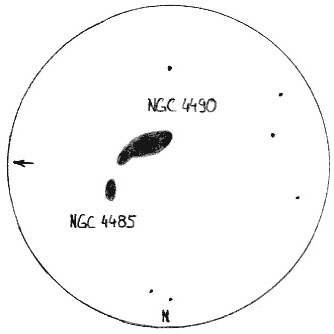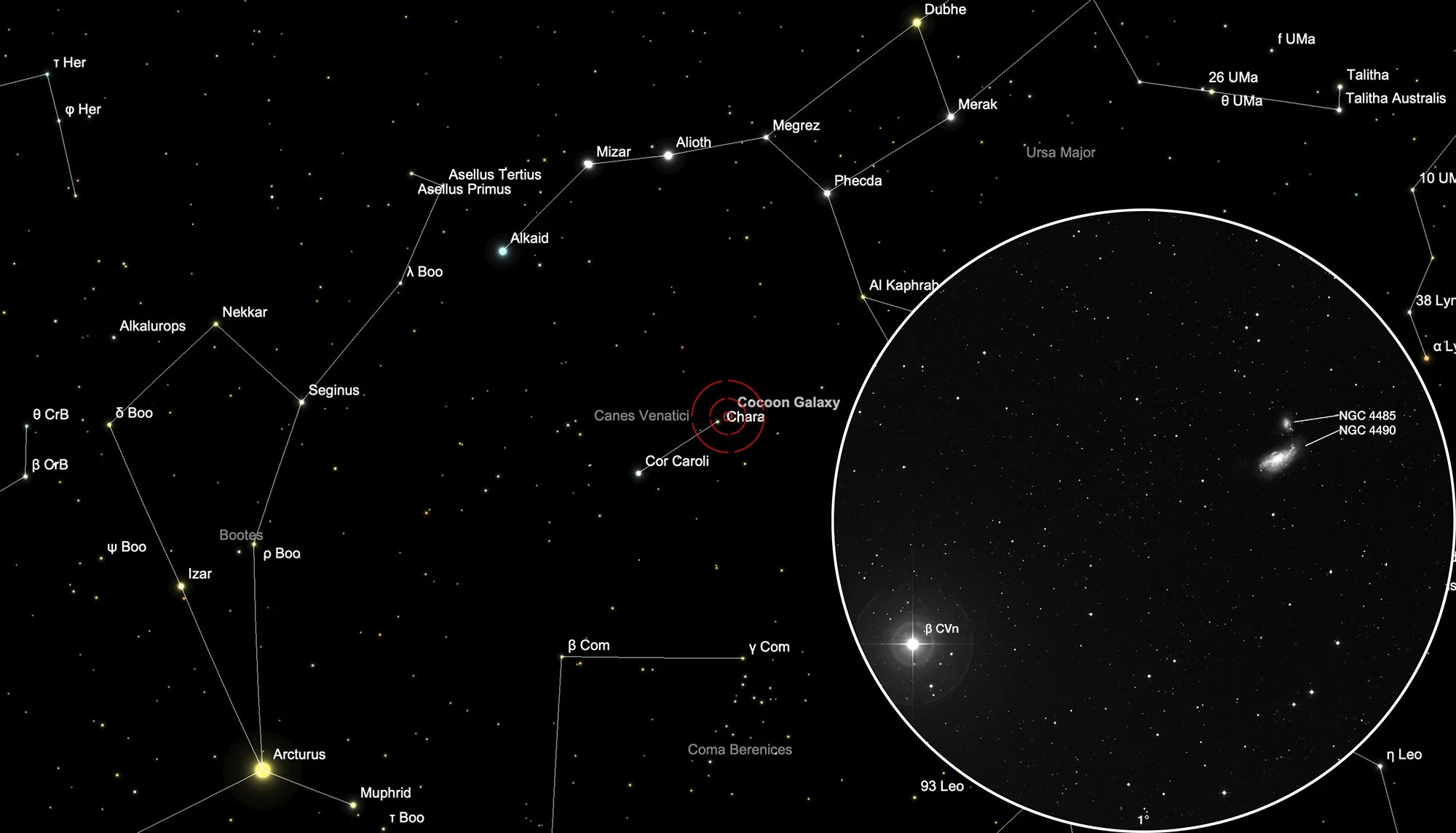Cocoon Galaxy (NGC 4485/90)

Object Description
This pair of galaxies was discovered by William Herschel on 14 January 1788. As for most of his discoveries he was using his 18.7 inch reflecting telescope with 20 feet focal length. He cataloged his discovery as I 197 (NGC 4485) and I 198 (NGC 4490). In his «Catalogue of a second Thousand of new Nebula and Clusters of Stars» he described it as: «Two. The southern very bright, very large, irregular extended. The northern bright, pretty small, irregular faint. Distance 1' 1/2.» [464]
The galaxy NGC 4490 is known as the Cocoon. In fact, their shape is reminiscent of a pupae of a caterpillar or even a nascent butterfly. The brighter and larger galaxy NGC 4490 is accompanied by the smaller galaxy NGC 4485 in the immediate vicinity. It appears that the two galaxies are gravitationally affecting each other. [192] Measured distances vary from 6.9 Mpc to 11 Mpc. [145]
| Name | RA | Dec | Type | bMag | vMag | B-V | SB | Dim | PA | z | D(z) | MD | Dreyer Description | Identification, Remarks |
|---|---|---|---|---|---|---|---|---|---|---|---|---|---|---|
| NGC 4485 | 12 30 31.3 | +41 42 03 | Gx (IBm/P) | 12.3 | 11.9 | 0.4 | 13.2 | 2.4 × 1.8 | 15 | 0.001644 | 6.94 | 9.300 | B, pS, iR, np of 2 | WH I 197; h 1306; GC 3041; UGC 7648; MCG 7-26-13; CGCG 216-7; KCPG 341A; Arp 269; VV 30 |
| NGC 4490 | 12 30 36.1 | +41 38 34 | Gx (SBcd) | 10.2 | 9.8 | 0.4 | 12.9 | 6.4 × 3.2 | 125 | 0.001885 | 7.96 | 8.680 | vB, vL, mE 130°, r, sf of 2 | WH I 198; h 1308; GC 3042; UGC 7651; MCG 7-26-14; CGCG 216-8; KCPG 341B; Arp 269; VV 30 |
Finder Chart
The galaxy pair is located in the constellation Canes Venatici and is very easy to find: Extend the connecting line from the two stars Cor Caroli (α Canum Venaticorum, 2.9 mag) to the 4.2 mag star Chara (β Canum Venaticorum) by about 40 arc minutes . The two galaxies should already be visible in the eyepiece.
Visual Observation

350 mm aperture: A slight bend can be seen on NGC 4490 and further it has a bright elongated core. To the southeast, they are joined by a mag 14.2 star just at the galaxy's end. Almost inconspicuously, the star binds to NGC 4490. The galaxy NGC 4485 is much smaller and slightly fainter than its sister. It also has a noticeably brighter galactic core. [192]
